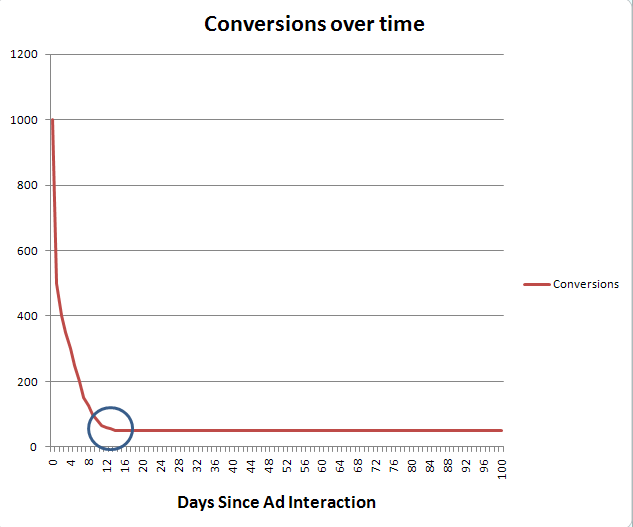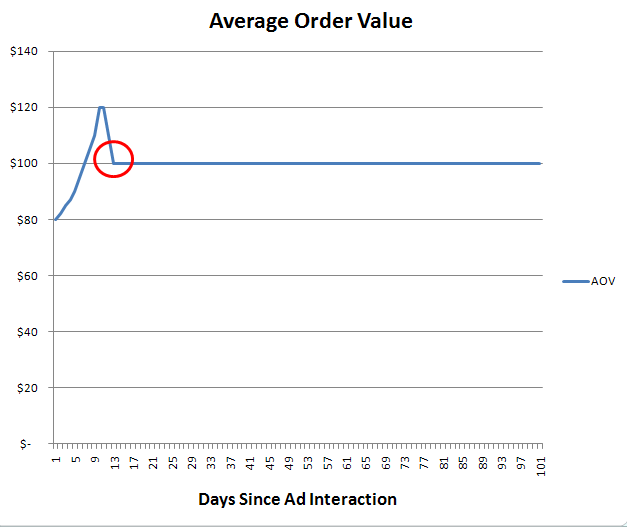8 Thoughts On Cookie Tracking & 3 Ways To Create Cookie Windows
How should advertisers and their agencies think about cookies? Oft neglected in the discussions of ROI measurement and attribution management is the question: how long after an interaction with an ad should a marketing channel receive credit? Today, I want to pontificate a bit on the subject and then dive into some brass tacks, practical […]
How should advertisers and their agencies think about cookies? Oft neglected in the discussions of ROI measurement and attribution management is the question: how long after an interaction with an ad should a marketing channel receive credit?
Today, I want to pontificate a bit on the subject and then dive into some brass tacks, practical methodology.
Pontification
- Cookies are an imperfect tracking device, but remain the best thing to happen to online marketing.
- As cross-device tracking becomes increasingly important with people surfing on mobile devices but putting off form completion for desktops and notepads, cookie data will need to be de-duped when possible. Site login/user recognition will allow advertisers to connect user behavior across devices, and advertising managers will need to incorporate that data, like call-center sales, in the near future.
- First-party cookies will be critically important with the growth of mobile and the market share possessed by Apple’s mobile devices. Safari browsers by default reject 3rd party cookies. Re-directs are the cleanest mechanism for establishing first party cookies but that data must be supplemented with impression data to create the true picture.
- The notion of a cookie window is awkward, but convenient. To say that an ad, paid search or other, should get some credit for a conversion event that takes place X days after the interaction with the ad, but no credit after X + 1 days is inelegant at best. Indeed ‘first touch’ attribution, and any system weighting ‘first touches’ heavier than others needs to think about the fact that with windows in place ‘first’ is a challenging concept. Some notion of decaying credit makes sense but poses material technical challenges and needs to be managed as part of an attribution methodology. Statisticians use the highly technical term ‘icky’ to describe methods of handling time lag effects.
- If hard windows are necessary, it’s best to handle them in reporting rather than through cookie expiration. By setting a permanent cookie and applying a fixed number of days of credit in reporting, you can go back to the database to conduct what if analysis on longer windows. If cookies expire, you lose that visibility.
- The duration of a hard cookie window should be influenced by the conversion cycle of the business. The longer the average consideration cycle, the longer the window should likely be.
- The business model should impact the window as well. Interested parties are scrambling to prove the connection between online advertising and offline conversions, but it’s important to recognize that that connection works both ways. For businesses that spend the majority of the advertising budget offline, the offline advertising can also impact your view of online advertising’s effectiveness. If your company or client spends 90% of it’s marketing budget on TV ads, or Newspaper circulars or catalogs, and hits a wide chunk of the population every week, a shorter credit window for online advertising might be more accurate.
- You may be able to identify the right cookie window in the data. We’ll talk about methods of doing so below.
3 Methods For Establishing Cookie Windows
One beauty of online marketing is that the data usually makes intuitive sense: brand search traffic converts at a higher rate than competitive search traffic; specific search keywords convert better than more general search terms; etc.
Letting our marketing intuition guide us, there are certain patterns in the data that can help steer us to the right cookie window.
I fleshed out all of these in more detail a few years back, but it’s worth touching on the concepts here.
1. The Click To Conversion Curve
Here’s the notion: An ad is likely to impact your behavior more in the immediate future than it is in the distant future. Producers of infomercials can talk about this subject in great depth.
Therefore, we would expect that the greatest number of orders following an ad interaction would happen on the same day, the second greatest number would occur the next day and that that trend would continue for as long as we extend the window.
However, that is not what we usually see. What we usually see is the number of orders declines up to some point and then levels off, with roughly same number of orders following everyday thereafter.
That suggests to us that the behavior of that group can no longer be explained by latency from exposure to the ad, and instead their behavior must be driven by something else. That’s the point at which credit should no longer be attributed to the ad.
Graphically, it looks like this:
2. Average Conversion Value
It makes logical sense that one reason people spend more time between the initial visit to your site and conversion is that they’re making a larger financial commitment and want more time to consider the decision and shop around.
If that was the case then in e-commerce, we’d expect to see the AOV of orders placed increase over time with the people ordering 100 days after the initial visit having a higher AOV than those who purchased 50 days later, etc.
That pattern also breaks down over time. For most e-commerce advertisers, the AOV grows up to a peak value then drops back down to an average. This again suggests that those making purchase after that peak are likely on a different shopping mission, no longer related to the initial visit.
For e-commerce sites, those who see method #1 and method #2 point to the same window duration can be fairly confident with that decision. Obviously, the graphs above are highly idealized, but the trends are pretty clear in the real data for most advertisers.
3. Keyword – Purchased Item Agreement Rates
This is extraordinarily difficult to study comprehensively, but sampling can give a reasonable sense. We’d expect most people to buy something generally related to the search term they used to find us. We’ve done some research on this ourselves, and the variance advertiser to advertiser is material, but generally something on the order of 80% of orders have items clearly related to the search phrase.
However, as the time between click and conversion increases, the match rate tends to maintain for a time and then drop off sharply. This indicates people are likely on a different shopping mission driven by something other than that aging ad experience.
Conclusions
Tracking cookies are an imperfect but still tremendously valuable piece of the online marketing equation. It is worth spending time analyzing how best to use them to meet your marketing objectives.
Image used under license from RustyBrick on Flickr.
Opinions expressed in this article are those of the guest author and not necessarily Search Engine Land. Staff authors are listed here.
Related stories


